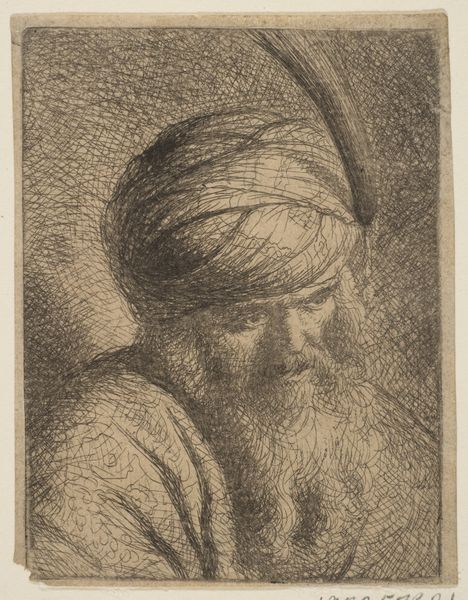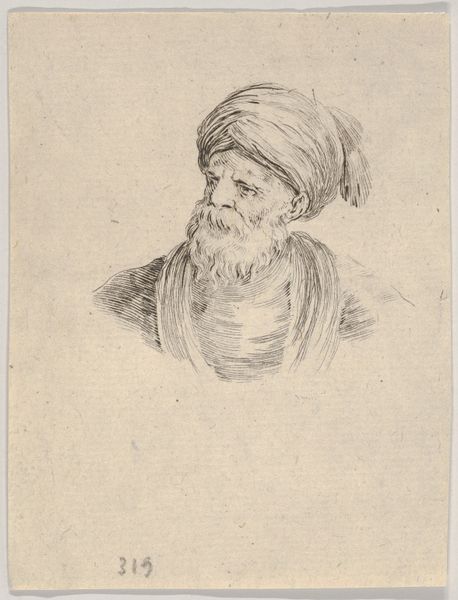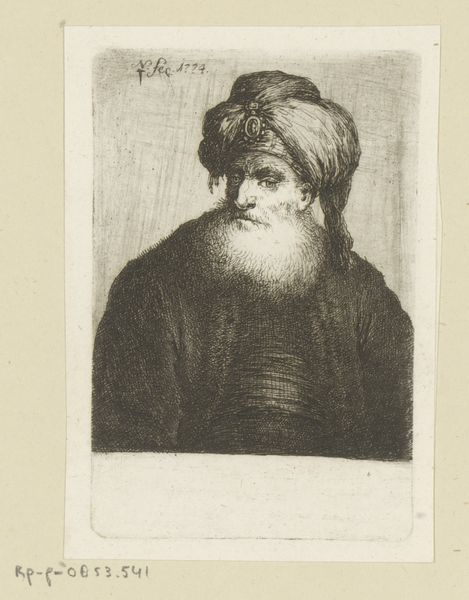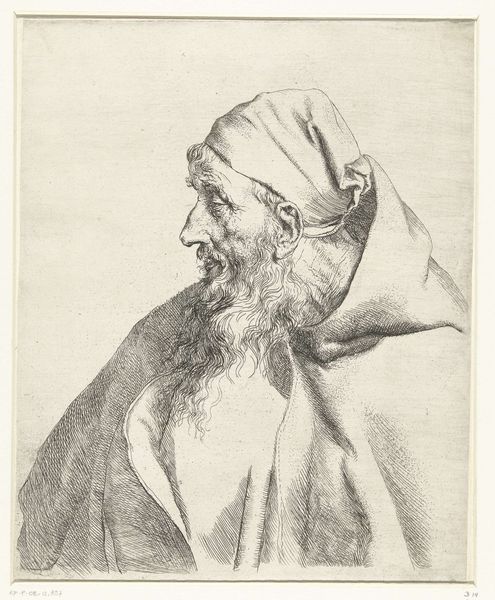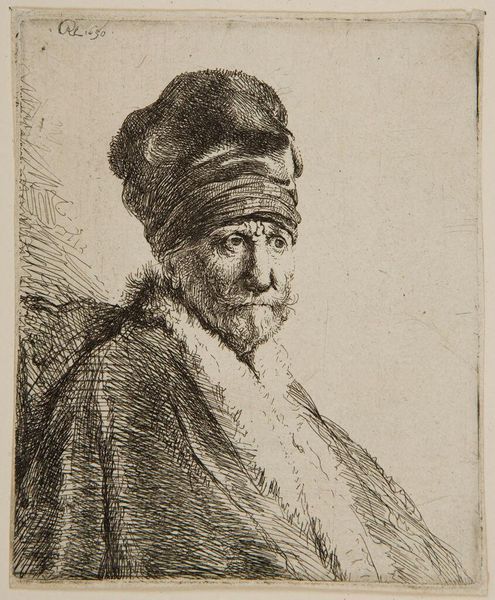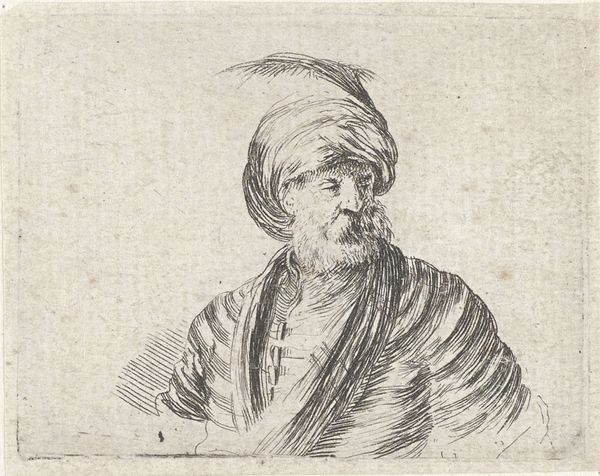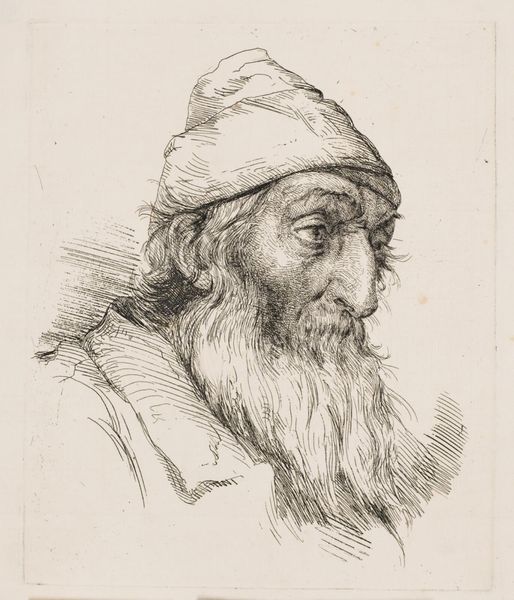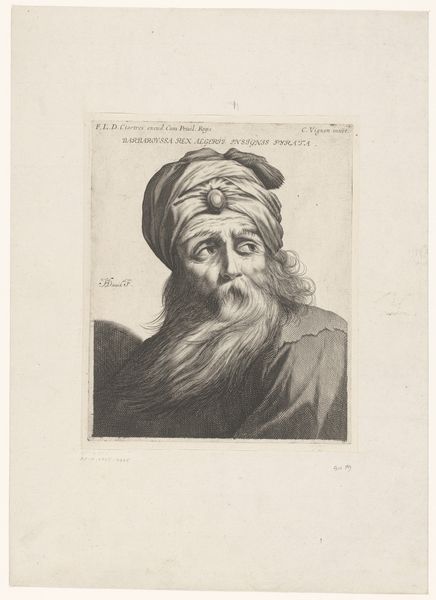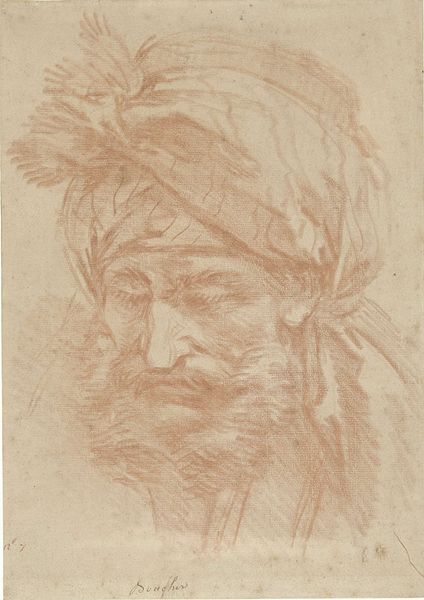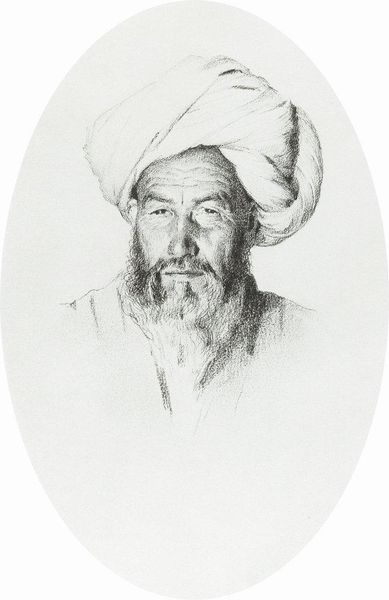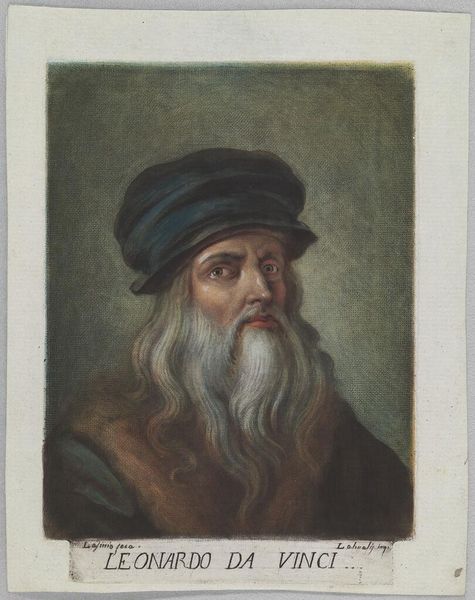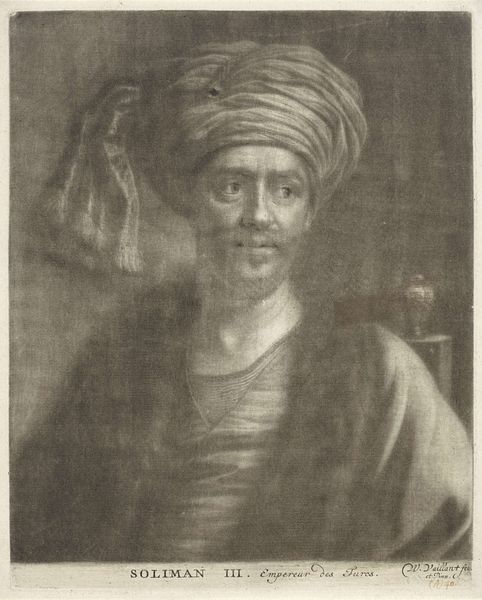
Dimensions: height 103 mm, width 65 mm
Copyright: Rijks Museum: Open Domain
Editor: We're looking at Aert Schouman's "Bust of a Man with a Turban," created around 1746. It’s a drawing, using charcoal or pencil. I’m really struck by how detailed the face and beard are. How do you interpret this work? Curator: Well, consider the Dutch East India Company. The turban becomes less about the individual and more a symbol of global trade and the exotic East, brought back into the cultural consciousness of the Netherlands. Who was deemed worthy to be seen, to be captured and then displayed, and what did they signify in society? Editor: So you are saying the artist is not so interested in this specific man but what he represents as an “Eastern” figure? Curator: Precisely! How does the simple medium impact its message, think about pencil or charcoal? Editor: It’s accessible and easily reproduced. The portrait becomes more democratic, shared widely, shaping public opinion. So its less about the rich but who are relevant as symbols to public culture? Curator: Exactly! And look at where this is exhibited now. A museum inherently elevates it, further embedding these power structures. Museums create the canon but aren't neutral places for showing the past but very loaded. Editor: It’s a lot to think about how historical context changes how we see even a single portrait. I wouldn't have looked beyond just the aesthetic of the portrait at first sight. Curator: Absolutely. These images serve functions, legitimizing some narratives, and suppressing others. That’s the crucial layer a historical lens can bring.
Comments
No comments
Be the first to comment and join the conversation on the ultimate creative platform.

